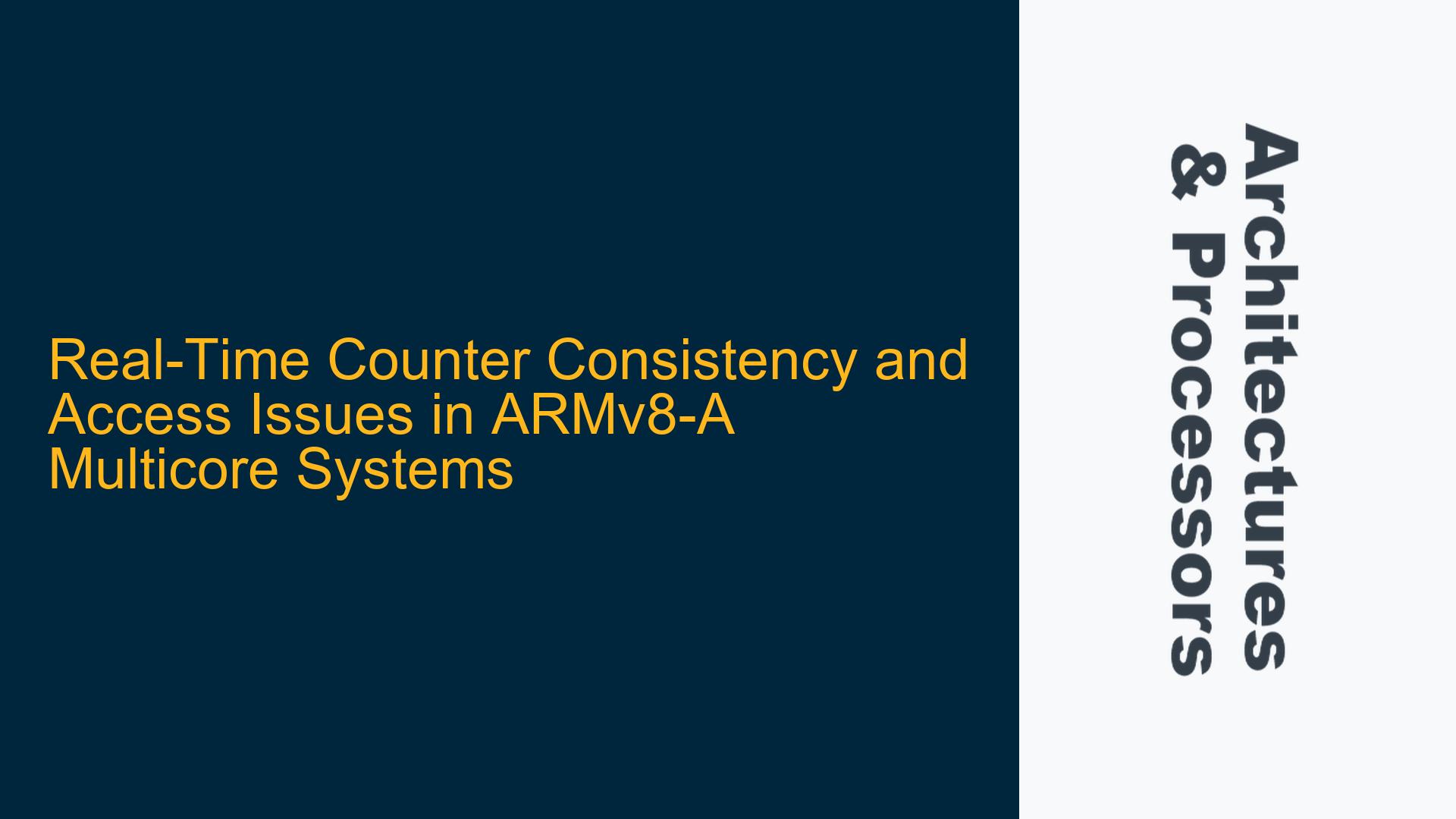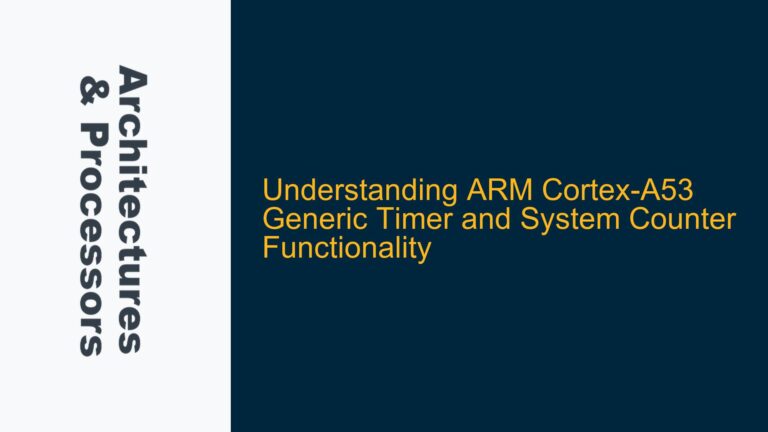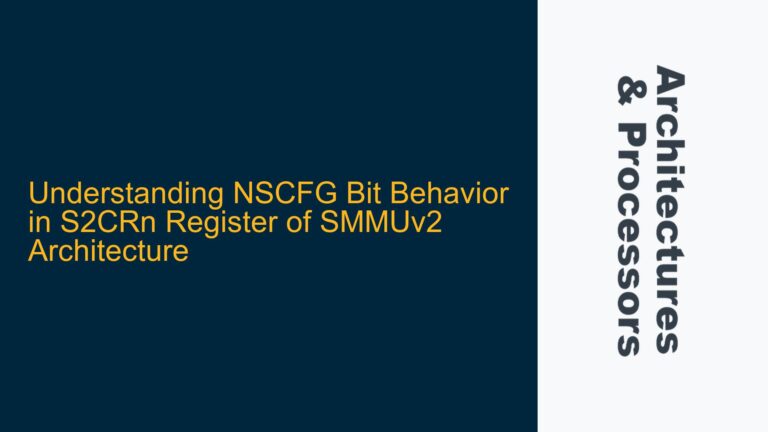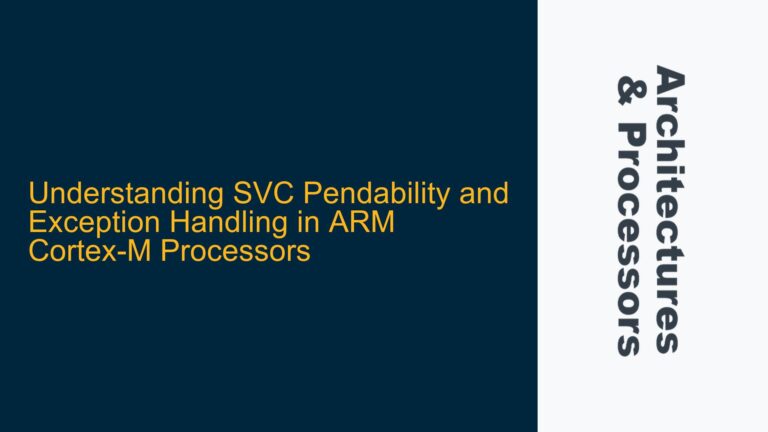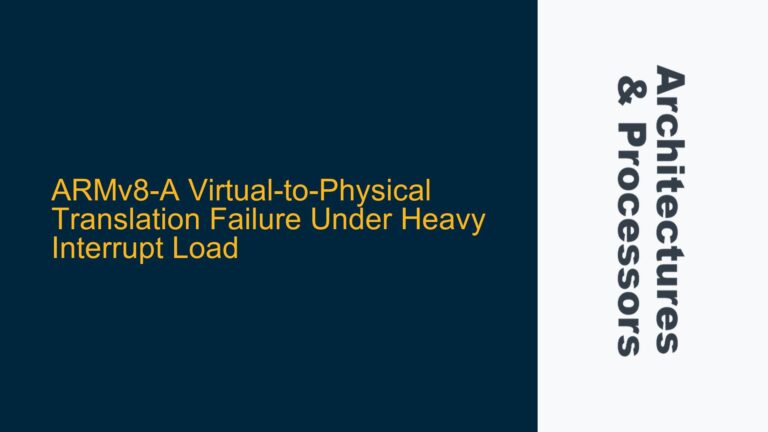ARMv8-A Real-Time Counter Requirements and Challenges
In ARMv8-A architectures, particularly in multicore systems like the Xilinx RFSoC with four Cortex-A53 cores, achieving a low-overhead, high-resolution real-time counter that is consistent across all cores and accessible from user-level code (EL0) is a non-trivial task. The primary requirement is to read a counter with a resolution of 1 microsecond or better, ensuring that the readings are consistent across all cores and can be accessed with minimal overhead. This implies that the counter should be directly readable from EL0 without trapping into the operating system (OS), and preferably, the read operation should be atomic.
The ARMv8-A architecture provides several counters that could potentially meet these requirements, including CNTCV, CNTVCT, and CNTPCT_EL0. However, the accessibility and consistency of these counters depend on several factors, including the execution level (EL) at which the OS is running, the configuration of the system, and the specific implementation details of the ARM core. The challenge lies in ensuring that the counter is not only accessible from EL0 but also provides consistent readings across all cores, which is crucial for real-time applications.
Execution Level Trapping and Counter Accessibility
One of the primary challenges in accessing the real-time counter from EL0 is the potential for the OS to trap the access. In ARMv8-A, the CNTPCT_EL0 register is designed to provide the current count value of the physical counter, which is typically used for timing purposes. However, whether this register can be accessed directly from EL0 depends on the configuration of the CNTKCTL_EL1 register, which controls access to the system timer registers at different execution levels.
If the OS is running at EL1, it may configure CNTKCTL_EL1 to trap accesses to CNTPCT_EL0 from EL0, forcing the access to be handled by the OS. This trapping mechanism is often used to prevent user-level applications from directly accessing hardware resources that could potentially disrupt system stability or security. However, this also introduces additional overhead, as each access to the counter would require a context switch to the OS, which is undesirable for real-time applications that require low-latency access to the counter.
Moreover, even if the counter is accessible from EL0, there are other factors that can affect the consistency of the readings across different cores. These factors include the Linux scheduler, cache misses, memory stalls, and interrupts, all of which can introduce variability in the timing measurements. Therefore, simply being able to access the counter from EL0 does not guarantee that the readings will be consistent across all cores, especially in a multicore system where each core may be running different tasks with varying levels of contention for shared resources.
Implementing Low-Overhead Real-Time Counter Access
To achieve low-overhead access to a real-time counter that provides consistent readings across all cores, several steps must be taken. First, it is essential to ensure that the counter is accessible from EL0 without trapping into the OS. This can be achieved by configuring the CNTKCTL_EL1 register to allow access to CNTPCT_EL0 from EL0. However, this configuration must be done carefully, as it involves modifying a system register that controls access to critical hardware resources.
Once the counter is accessible from EL0, the next step is to ensure that the read operation is atomic. In ARMv8-A, the CNTPCT_EL0 register is a 64-bit counter, and reading it atomically requires a single instruction that can read the entire 64-bit value in one operation. This can be achieved using the MRS instruction, which moves the value of a system register into a general-purpose register. The following assembly code snippet demonstrates how to read the CNTPCT_EL0 register atomically:
asm volatile ("mrs %0, cntpct_el0" : "=r" (value));
This code reads the value of CNTPCT_EL0 into the value variable, ensuring that the read operation is atomic. However, it is important to note that the MRS instruction may not be available in all compilers or may require specific compiler flags to be enabled. Therefore, it is essential to verify that the compiler being used supports the MRS instruction and that it is correctly generating the necessary machine code.
In addition to ensuring atomic access, it is also crucial to consider the frequency of the counter. The CNTPCT_EL0 register is driven by the system counter, which typically operates at a frequency of 1-50 MHz. This frequency determines the resolution of the counter, with higher frequencies providing better resolution. For example, a 50 MHz counter would provide a resolution of 20 nanoseconds, which is more than sufficient for most real-time applications. However, the actual frequency of the counter may vary depending on the specific implementation of the ARM core, so it is essential to verify the frequency of the counter in the system being used.
Finally, to ensure that the counter provides consistent readings across all cores, it is necessary to consider the synchronization of the counter across the cores. In ARMv8-A, the system counter is typically synchronized across all cores, ensuring that each core sees the same value when reading the counter. However, this synchronization is not guaranteed in all implementations, and it is possible for the counter to drift between cores, especially in systems with high levels of contention for shared resources. Therefore, it is essential to verify that the counter is synchronized across all cores in the system being used.
In conclusion, achieving low-overhead, high-resolution real-time counter access in ARMv8-A multicore systems requires careful consideration of several factors, including counter accessibility, atomicity, frequency, and synchronization. By configuring the CNTKCTL_EL1 register to allow access to CNTPCT_EL0 from EL0, using the MRS instruction to ensure atomic access, and verifying the frequency and synchronization of the counter, it is possible to achieve consistent and low-latency access to a real-time counter that meets the requirements of real-time applications.
